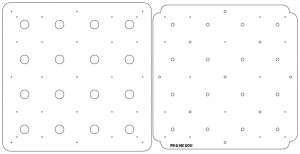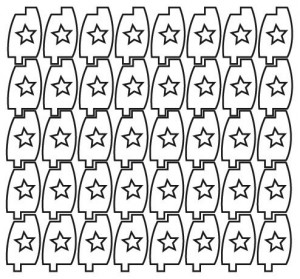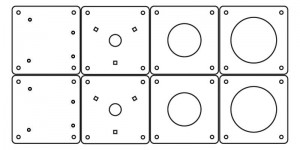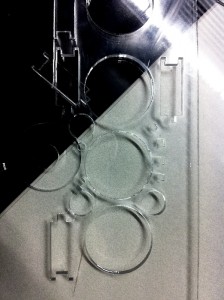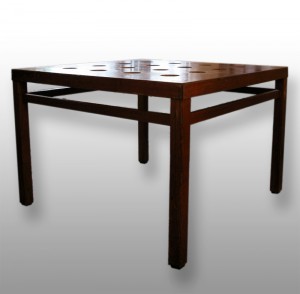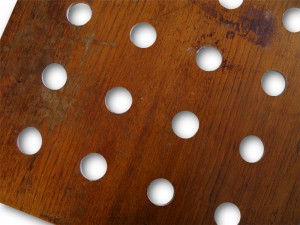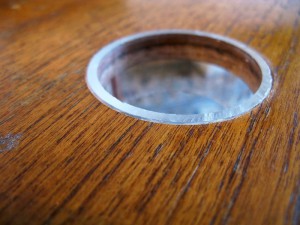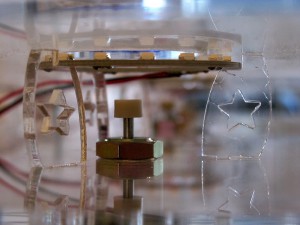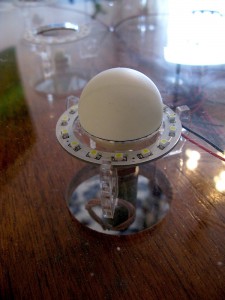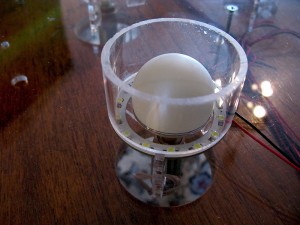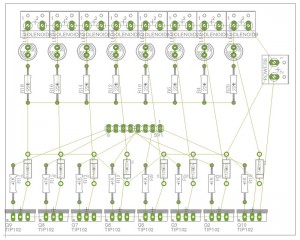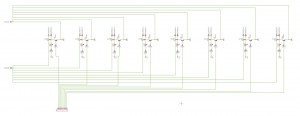Aug 26, 2011
Pingispöytä a.k.a. PingPongTable
This is a project update for last years Designing interactions course, this could also be seen as the final report for the project for the course, even if the project in itself is still a work in progress. This project is called “Pingispöytä” and it is made by Pasi Rauhala and Niklas Kullström from the Photography department.
So What is “Pingispöytä”? The concept started from the idea of making a electronically controlled “mechanical” ball bouncer. Several different approaches arose in the beginning, with different alternatives for propulsion and ball types. In the end we decided to use solenoids and ping pong balls for the project. The idea being that a solenoid would bounce up a ping pong ball into the air at a specific defined time.
So what would the point of this be? The plan was to use several solenoids and ping pong balls that are independently controllable, and create an output device using these. The first thought was to build a straight or curved row of bouncing devices that could for example display a progressive or repeating curve. One alternative was to use a hearth rate monitor for input and have the device show the users hearth rate as a ever moving sequence of jumping ping pong balls. After some tests and thinking we came to the conclusion that a matrix would be more useful than a straight row for the device. So we set us upon building a prototype for 4×4 matrix. The matrix and its function will be controlled by an Arduino Mega. The exact function and input is still under debate. But possibilities are quite many, perhaps even an interactive two player game.
The first working prototype test can be seen in this video.
First electronic test from Creative Thinking on Vimeo.
It uses the same basic components that will be used in the final version. The most problematic part of the design was figuring out a way to construct a return area for the ball, and figure out the optimal distance between the ball and the solenoid head in order to get the best bounce.
After having a working prototype for the electronics we started to construct the prototype. After many alternative approaches we decided to build the complete structure out of acrylic and cut the parts with a laser cutter. We also decided to insert the complete structure inside an ordinary coffee table that we bought for 4 €.
These are the vector based schematics created in Illustrator for the laser cutter.
The first image is of the test parts we made while figuring out the best size for different parts and their interaction between each other.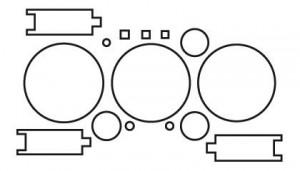
The second image is of the upper and lower sheets that make up the main parts of the construction. The upper sheet has all the holding holes for the ping pong balls while they wait to be bounced up. The lower sheet has all the holes for the solenoids. The two sheets are hold together with 40mm bolts and wing nuts.
The third image is of the spacers that come between the two sheets. these keep the sheets at an exact distance of 24mm from each other and they are designed to incorporate ring LED lights that we decided to add to the construction as an extra element.
The fourth image is of two extra constructions we decided to build, these are for making two single solenoid table top bouncers, they could be programmed to indicate time etc.
This is the first test cut for deciding the correct size and fit of the parts.
In this video you can see one of the main sheets being cut by the laser cutter.
Laser cutting parts from Creative Thinking on Vimeo.
The table we are are using is approx. 80x80cm and we have cut 16 60mm diameter holes into the table.
Inside these holes we will insert 28mm of 60mm diameter clear acrylic tubing.
The LED ring lights will be positioned directly under these tubes and light up when a solenoid is activated, these LED lights could also be triggered to work in an independent sequence apart from the solenoids.
The main construction is approx. 70×70 cm at its widest and 32mm thick. It fits securely inside the table and will be anchored with screws to the table. There will also be added some spacers of aluminium pipe around the bolts connecting the main sheets, and 15mm tubes between the top sheet and the table in order to maintain optimum and even distance between parts.
In the following images you can see the different constructions, (1) size and layout of the main sheets in proportion to the table (2) spacer construction and LED ring positioning between the sheets (3) ping pong ball mounted in its holding hole (4) and ping pong ball inside the acrylic tubing that will help guide it back to its starting position.
The following step in the process will be to create the circuit boards for the electronics needed, this has been a bit problematic for us this far, as the solenoids need quite a lot of energy and need to be controlled separately, the LED lights also need to be incorporated and individually controlled. Our current approach has been to make two separate groups of 8 solenoids and 8 LEDs on one circuit board and have two power sources, so that we could trigger two solenoids simultaneously. This far we have unfortunately not been able to create a working circuit board with this many components. The current schematics can be seen in these images.
Our new take on the problem is to create four groups of 4 solenoids with separate power sources for each group. We think that it will be easier to design the circuit boards for just 4 solenoids, and this will also give us more options for input and sequencing of the matrix. Hopefully we will be able to trigger four solenoids simultaneously. The exact pattern of how the groups would be laid out on the matrix is still not decided.
We are hoping to have the prototype up and running with all the components inserted in a few months time. We already have virtually all parts except the circuit boards, so we are quite eager to see the ping pong table in action.
